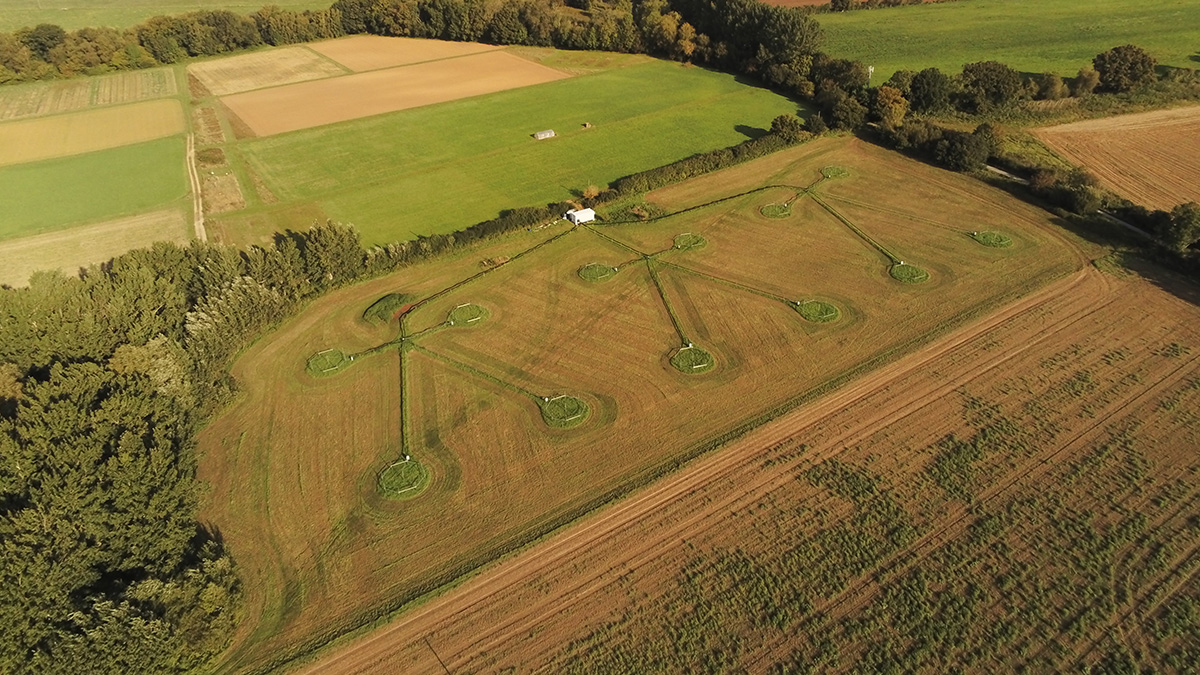The University of Reading’s Natural Environment Research Council (NERC)-funded Free-Air Diesel and Ozone Enrichment (FADOE) platform enables field-scale research on all aspects of pollution ecology. The platform consists of 12 pollution rings (8 m in diameter) that elevate diesel exhaust (including nitrogen oxides or NOx) and ozone (O3) pollutants to field-realistic concentrations. This allows researchers to investigate the real-world effects of two of the most common air pollutants on biological and ecological processes. The platform, located within a managed grassland ecosystem, consists of three rings for each of four treatments: i) an ambient air control, ii) diesel exhaust only, iii) ozone only, and iv) a combined diesel exhaust and ozone treatment.

Experiments within the FADOE rings are underway to determine the impacts of these two key air pollutants on the volatile chemical-mediated interactions. These are a vital component of how most species of plants and insects communicate and interact with their environment. Research into the effects of common air pollutants on volatile organic compound (VOC) communication has until now relied predominantly on laboratory-based studies, either of atmospheric chemistry (for example reaction kinetics and products analyses of single VOCs reacting with single pollutants) or behavioural ecology (for example bi- or tri-trophic species interactions using behavioural assays). VOCs, organisms and pollutants do not exist in isolation and therefore the FADOE platform enables us to decipher the complex interactions between air pollution, plants, and ecosystem service providers (for example, insect pollinators and biological control agents) at field scales that are spatially and temporally relevant to the organisms being studied.
FADOE platform technical overview:
A secure control unit containing NOx and O3 analysers are used to control the levels of diesel exhaust (emitted from a SSDK12W Kubota 12.6 kVA diesel generator) and ozone pollutants (emitted from ClearWater Tech CD2000P ozone generators) that are pumped (using Gast regenerative blowers) to the FADOE rings. Automatic adjustment of three-way valves and UV-light controllers alter the quantities of diesel exhaust and O3 released into the rings based on analyser outputs. Each ring consists of perforated 25mm corrugated pipes combined with a switching system that alters the direction of pollutant release based on the direction and speed of the wind from anemometers located at the centre of each ring.
The FADOE platform is available to academics and other researchers globally. We encourage any researchers that are interested in collaborating and using this platform for their research questions to contact Dr James Ryalls for more information.